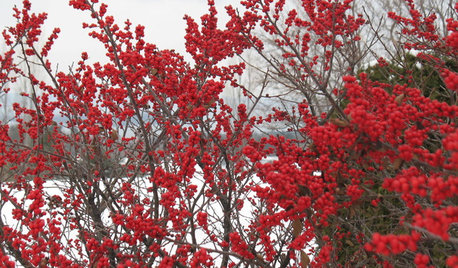I'm a a fanatic member of Nafex (North American Fruit Explorers) and have very carefully planted only cedar apple rust resistant apples because we have LOTS of cedars here in Tennessee. Now that I'm planting quinces though, I have discovered that the *%&$# hawthorns have got Cedar Quince Rust going. My husband adores cedars, so I can't chop out all the big cedars, and hate to chop out all the little ones as I like them too. Fortunately it seems there are CHR resistant Junipers that I can graft to existing young trees. I have a list, but the problem seems to be FINDING some of the resistant cultivars. I'll just start with the J. virginiana: Aurea, 'Berg's Rust Resistant', Pseudocupressus, Tripartita, and Venusta. I think I can track down Burkii, Globosa, Kosteri, and Skyrocket pretty easily, and it looks like I don't want to bother with 'Pyramidalis'.
Some of the prostrate forms of Chinensis and communis look like they might be fun to put on top of a 4 or 5' virginiana and let them trail. Would that look ok? Would they be structurally sound?
And it's dawned on me that instead of chopping pines to get them out of the way, that some of the smaller ones could be grafted too. Though without having a forest fire, I might have to start planting small pines to graft on.... I was looking at Michael Dirr's "Manual of Woody Landscape Plants" at the library, and it looks like I could graft Pinus mugo and Korean pine to our local Virginia pines. There are others, but will they do ok in our climate?
I've no desire to pay the prices I have seen on some nursery websites. What I really think I need for scions is either nursery liners or to go prune someone's trees for them. Or do some of you have a few branches to spare? In Nafex, we all wind up with extra stock or trees that need pruning anyway... some sell, some give away. Either way it's LOTS cheaper than going thru the nursery trade, and we have access to a far wider range of cultivars than the nurseries carry.
Advice would be very helpful. I've grafted plenty of fruit trees, have looking at photos of side veneer grafts for conifers. Can I can get a head start with maybe 2-3" diameter rootstocks? My husband is pretty excited about all this as he adores bonsai but never imagined he could have something bonsai-like without the constant tending. I'll check in every week as I realize a lot of you all are busy this time of year. Thanks! Donna












ken_adrian Adrian MI cold Z5
gardener365
Related Professionals
Citrus Heights Landscape Architects & Landscape Designers · Foothill Ranch Landscape Architects & Landscape Designers · Glen Ellyn Landscape Architects & Landscape Designers · Anderson Landscape Contractors · Canton Landscape Contractors · Arlington Landscape Contractors · Surprise Landscape Contractors · Arden-Arcade Landscape Contractors · Harvey Landscape Contractors · North Potomac Landscape Contractors · Ocoee Landscape Contractors · Ringwood Landscape Contractors · Salmon Creek Landscape Contractors · Santa Ana Landscape Contractors · Ansonia Landscape Contractorsdonna_in_tnOriginal Author
donna_in_tnOriginal Author